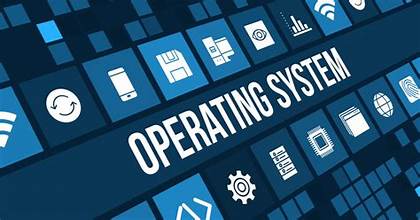
C is a powerful and widely used programming language that was developed in the early 1970s by Dennis Ritchie at Bell Labs. It is a general-purpose, procedural programming language, meaning it is well-suited for writing system software, applications, and other programs. C is often referred to as a “middle-level” programming language because it combines the features of low-level languages like assembly language with high-level languages like Python or Java.
Here is some key information about the C programming language:
- Syntax: C syntax is relatively simple and easy to understand, making it popular among programmers. It uses a structured approach with curly braces {} to define blocks of code, and it uses semicolons (;) to terminate statements.
- Portability: C programs can be easily ported from one platform to another with minimal changes, making it highly portable. This is because it is close to the hardware level and has a small runtime footprint.
- Efficiency: C provides direct access to memory and hardware, allowing for efficient manipulation of system resources. This makes it suitable for developing system-level software such as operating systems, device drivers, and compilers.
- Standard Libraries: C comes with a standard library of functions that provide a wide range of functionality, including input/output operations, string manipulation, memory allocation, mathematical operations, and more.
- Pointers: One of the most powerful features of C is its use of pointers, which are variables that store memory addresses. Pointers allow for efficient memory management and facilitate the implementation of data structures like linked lists, trees, and graphs.
- Static Typing: C is a statically typed language, which means that variable types must be declared before they can be used. This helps catch errors at compile-time and can lead to more efficient code execution.
- Preprocessor Directives: C uses preprocessor directives, which are commands that are processed by a preprocessor before compilation. These directives are used to include header files, define macros, and perform conditional compilation.
- Modularity: C supports modular programming through the use of functions and libraries. Functions allow code to be divided into smaller, reusable units, while libraries provide collections of functions that can be shared across multiple programs.
- Legacy: C has a long history and is still widely used today in various domains such as system programming, embedded systems, game development, and more. Many modern programming languages like C++, Java, and Python have borrowed syntax and concepts from C.
Overall, C is a versatile and powerful programming language that remains an essential tool for software developers, particularly those working on system-level and performance-critical applications. While it may have a steeper learning curve compared to some higher-level languages, mastering C can provide a solid foundation for understanding computer architecture and programming concepts.
HISTORY OF C LANGUAGE
The history of the C programming language is quite fascinating, with its roots dating back to the late 1960s and early 1970s. Here’s a brief overview of its evolution:
1. **Origins at Bell Labs**: C was developed by Dennis Ritchie at Bell Laboratories (AT&T’s research facility) in the early 1970s. Along with Ken Thompson, Ritchie was involved in the development of the UNIX operating system, which was initially written in assembly language. However, they soon realized the limitations of assembly language for system programming tasks.
2. **Development**: In 1972, Dennis Ritchie began work on a language that would overcome the limitations of assembly language while retaining its ability to directly access hardware and efficiently manipulate memory. This led to the creation of C, which was initially called “B” (named after its predecessor, the BCPL language).
3. **Evolution and Standardization**: As C gained popularity both inside and outside Bell Labs, it underwent further refinement and standardization. In 1978, Brian Kernighan and Ritchie published “The C Programming Language,” also known as the K&R C, which served as the de facto standard reference for the language. In 1983, the American National Standards Institute (ANSI) formed a committee to establish an official standard for the C language, resulting in the ANSI C standard, published in 1989. This standard was later adopted by the International Organization for Standardization (ISO) as ISO/IEC 9899:1990.
4. **Influence and Popularity**: C’s simplicity, efficiency, and portability contributed to its widespread adoption across various domains, including system programming, application development, and embedded systems. Its influence can be seen in many subsequent programming languages, such as C++, Objective-C, and Java, which borrow syntax and concepts from C.
5. **Continued Development**: Despite being over four decades old, C remains a widely used programming language today. It has continued to evolve with the release of subsequent standards, such as the ANSI C standard (C89/C90), the ISO C standard (C99), and more recently, the ISO C standard (C11) and (C17).
6. **Legacy and Future**: C’s legacy is evident in its continued use in critical systems and software infrastructure worldwide. While newer languages offer higher-level abstractions and features, C’s efficiency, control, and close-to-the-hardware nature ensure its relevance in areas such as operating systems, device drivers, embedded systems, and performance-critical applications.
In summary, the history of C is characterized by its evolution from a language developed at Bell Labs to a widely adopted and standardized programming language with a lasting impact on the field of computer science and software development.




